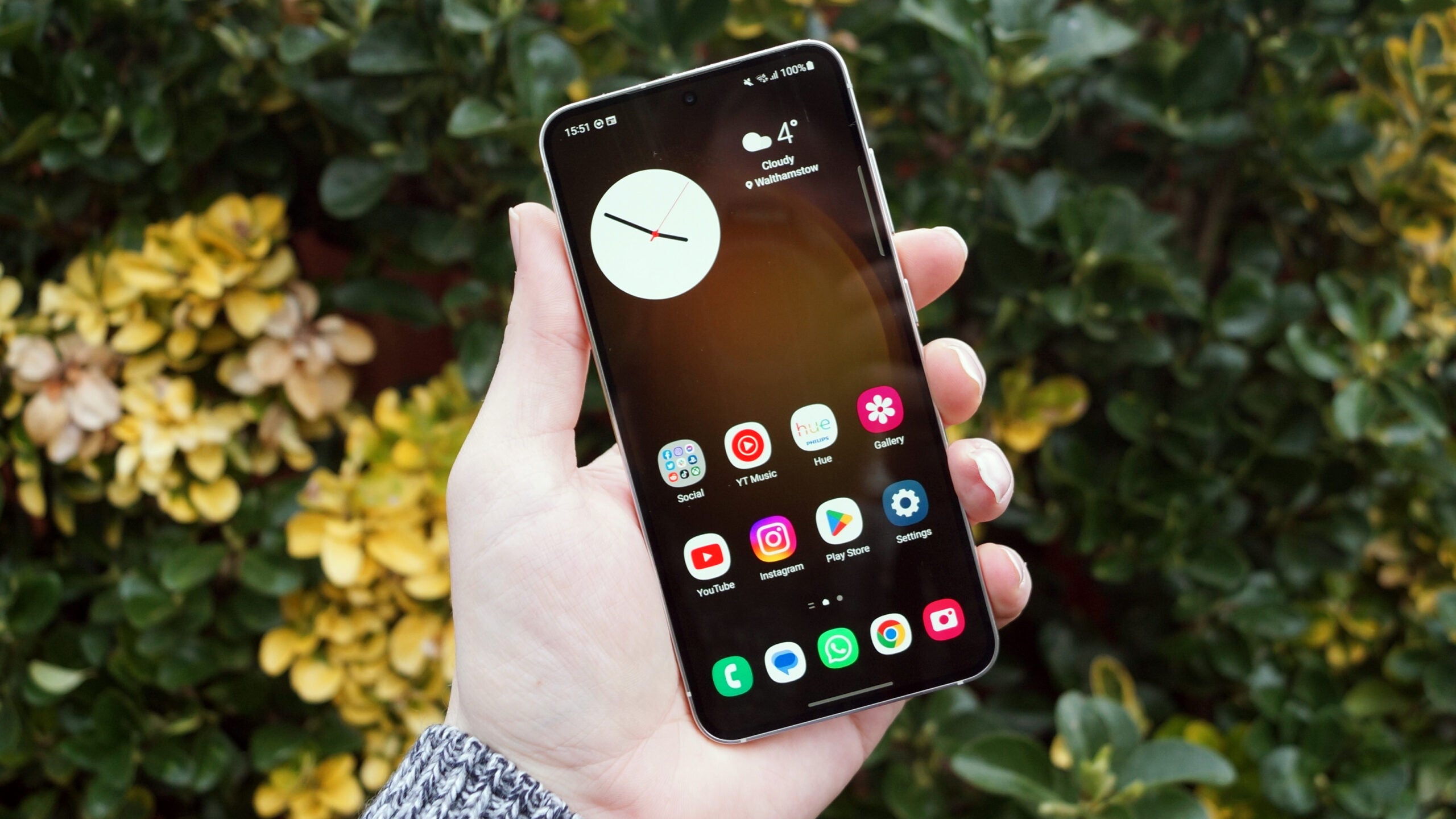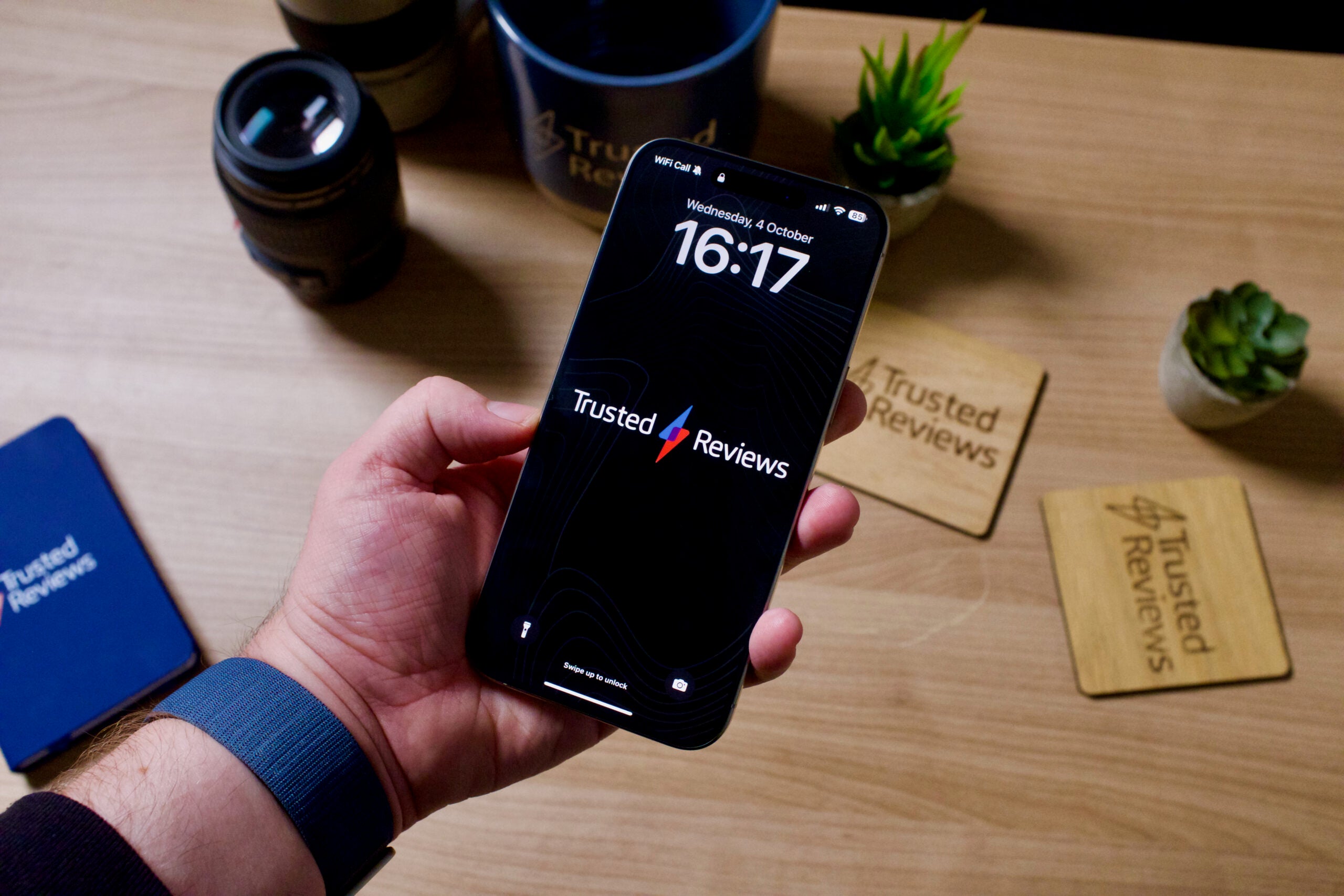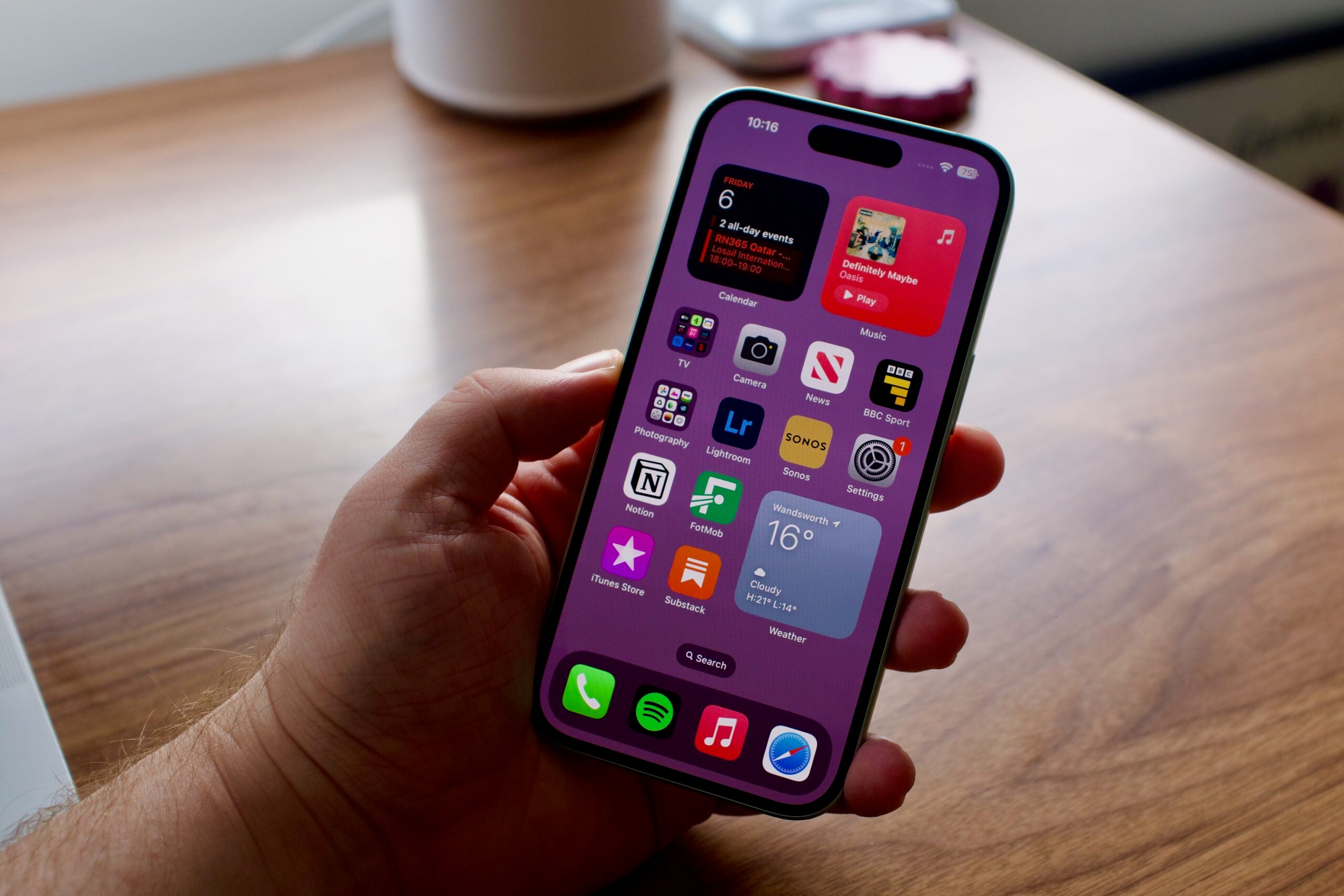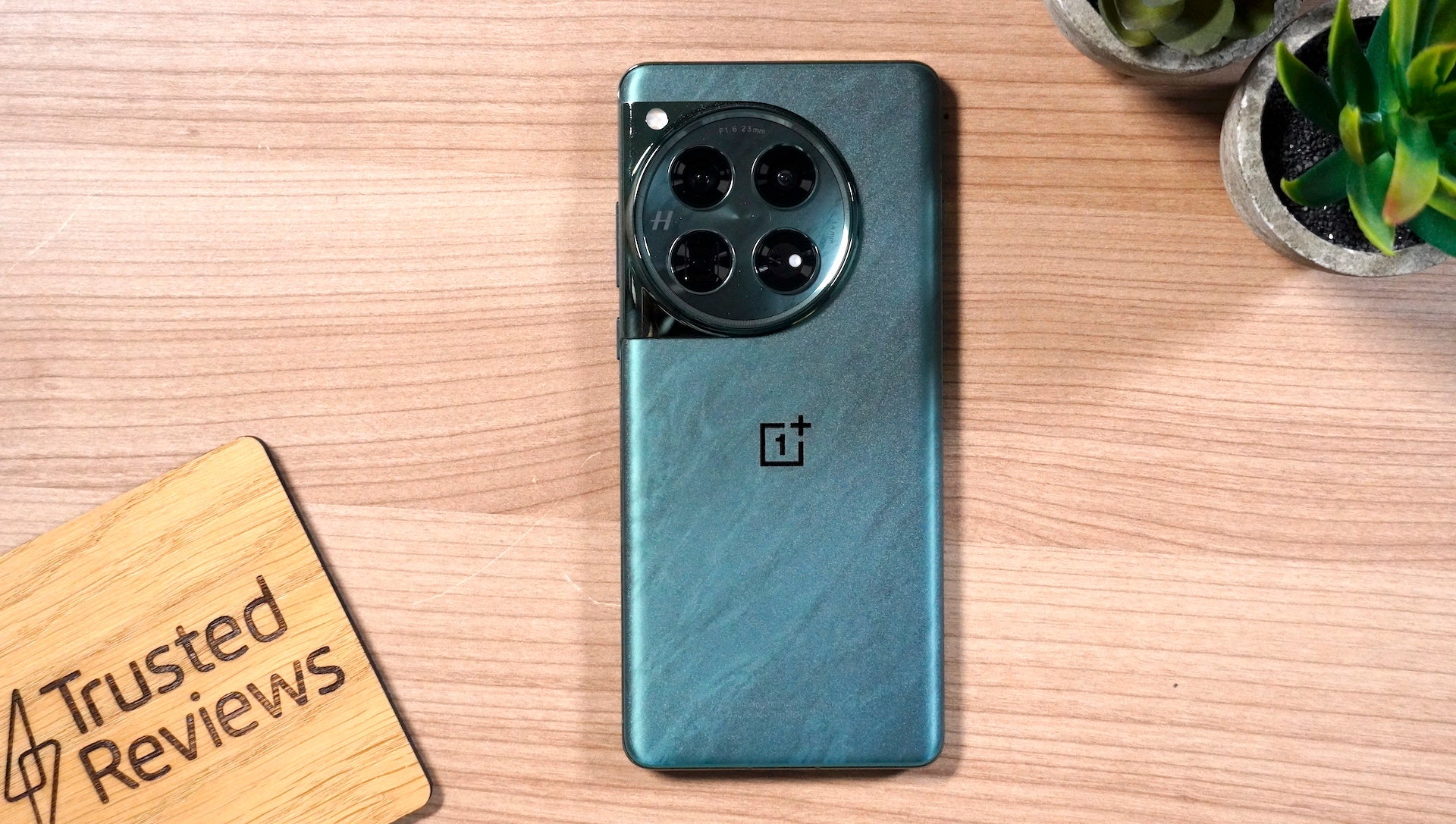Apple iPhone 15 Pro Review
It might not be massively different, but vanilla still tastes just as good





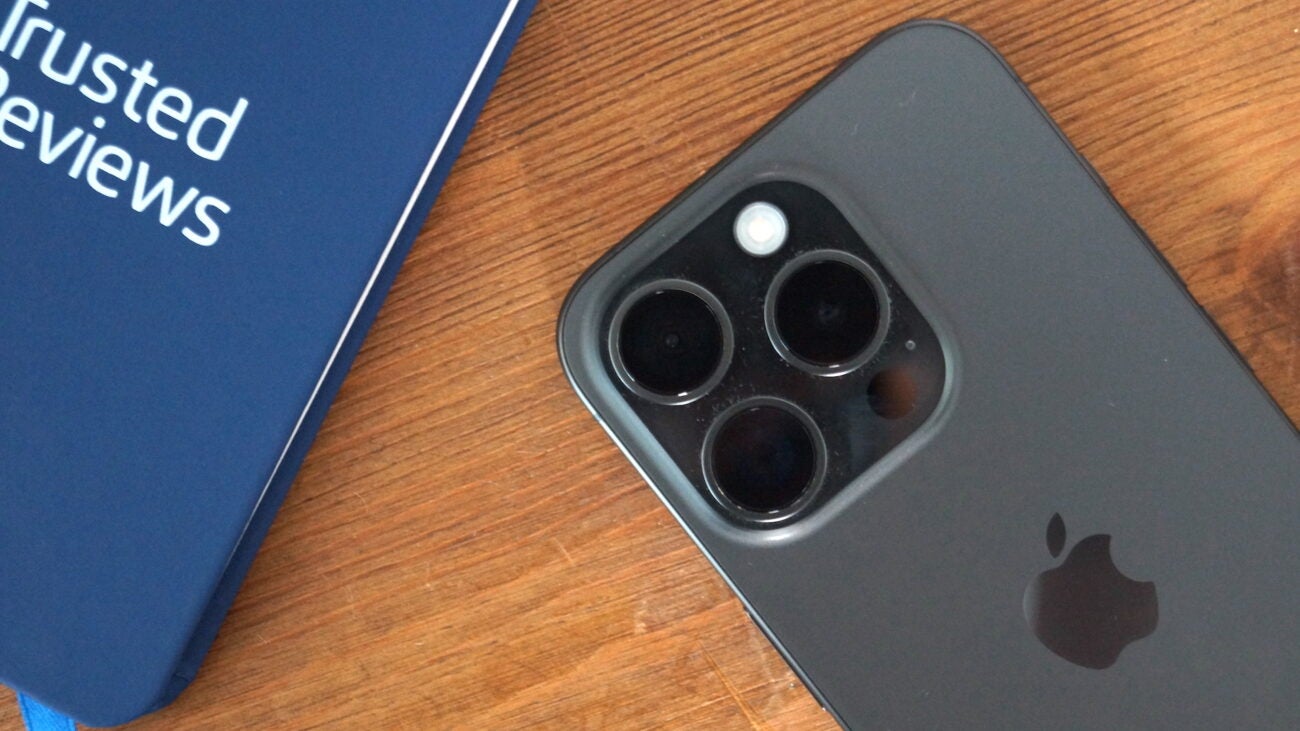



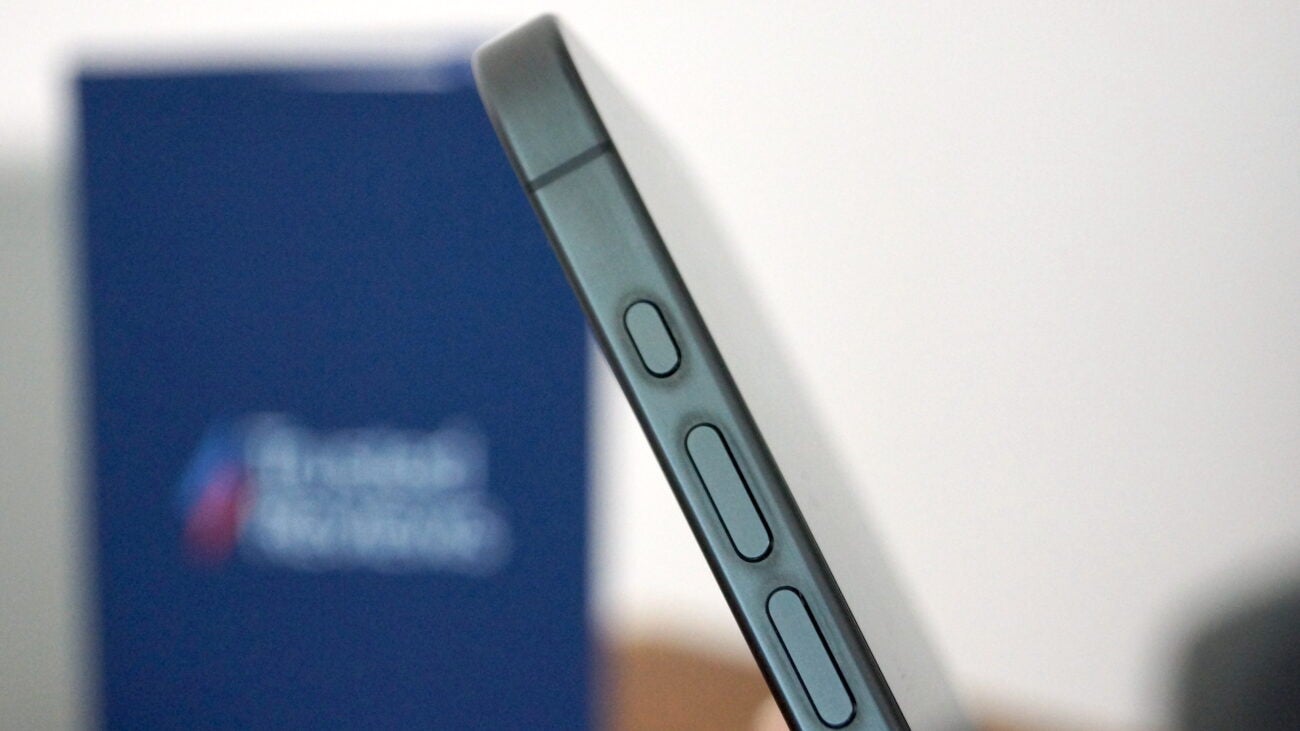
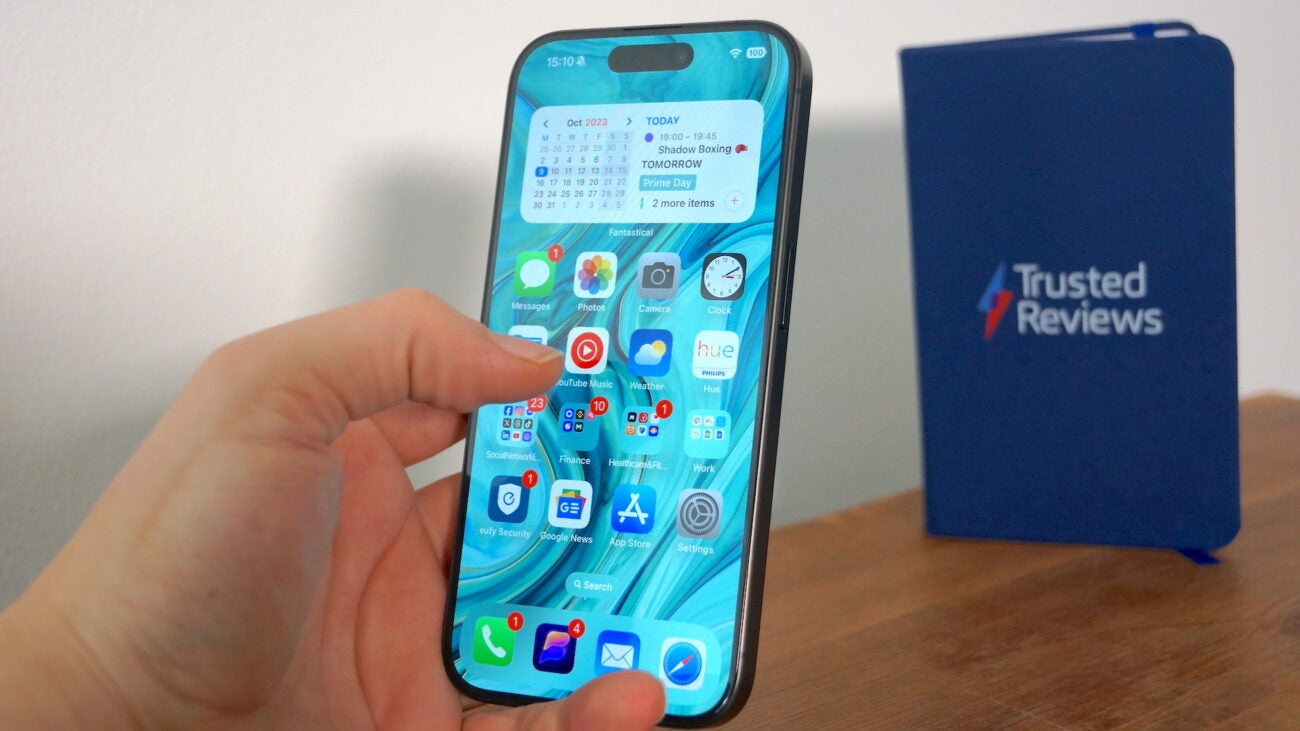

Verdict
The iPhone 15 Pro may not be the most exciting upgrade of the generation, lacking the 5x telephoto lens of the Pro Max, but it remains a very capable compact option for practically everyone but iPhone 14 Pro users.
Pros
- Lightweight and more comfortable to hold
- Great camera performance in most conditions
- Incredible A17 Pro power
- Handy Action Button
Cons
- Same 3x telephoto as its predecessor
- Sluggish charging
Key Features
- Comfortable, lightweight designThe combination of a new titanium frame and slightly rounded edges makes the iPhone 15 Pro much more comfortable to use than its predecessor.
- Capable camera systemThough it misses out on the 5x telephoto of the iPhone 15 Pro Max, the versatile triple rear camera system of the iPhone 15 Pro delivers great results in well-lit and low-light environments.
- Incredible top-end powerThe 3nm A17 Pro of the iPhone 15 Pro leaves the Android competition in the dust, with console-level games currently in development for the iPhone 15 Pro.
Introduction
The Pro model of iPhone is usually the easiest of the collection to recommend, but it’s decidedly harder in 2023 with the introduction of the iPhone 15 Pro.
While the iPhone 15 Pro does still represent a sweet spot in Apple’s iPhone collection with a 120Hz ProMotion display, a triple camera setup and Apple’s A17 Pro chipset, it’s not that different to the iPhone 14 Pro.
That would’ve been a somewhat easier pill to swallow had Apple not upgraded the telephoto camera of the iPhone 15 Pro Max from 3.5x to 5x while leaving the Pro unchanged. You could essentially save some serious cash by sticking with the regular iPhone 15 or iPhone 15 Plus.
That said, while the iPhone 15 Pro may not represent a huge reason for iPhone 14 Pro users to upgrade, it still offers that signature high-end compact iPhone experience that Apple fans continue to adore, and I do not doubt that it’ll remain a popular phone throughout 2024.
Design
- More comfortable to hold
- Handy customisable Action Button
- New USB-C port
The iPhone 15 Pro may look a lot like the iPhone 14 Pro at first glance, but there has been a meaningful refresh that does a surprisingly good job of making the iPhone 15 Pro more comfortable to use without compromising on the signature iPhone style.
The most instantly notable difference is the rounded edges of the phone. It still sports the same angular, industrial design as its predecessors but with ever-so-slightly more rounded edges that allow the iPhone to fit more nicely into the grooves of your palm without the irritation of those slightly sharp edges.
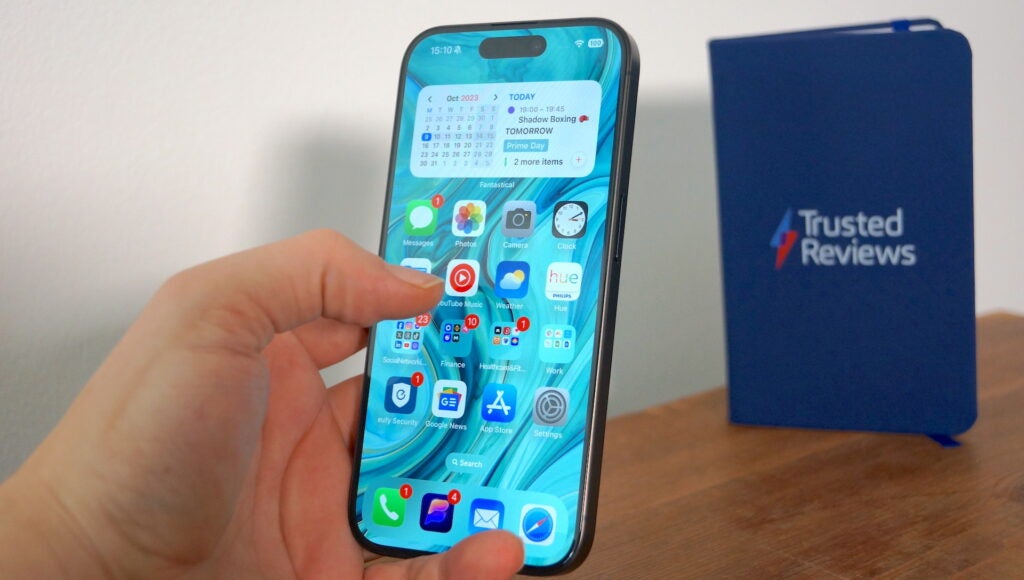
I never had an issue with the iPhone 14 Pro’s design during my year of use, but after using the iPhone 15 Pro for a little over a week, it’ll be tough to go back. It feels so much nicer to hold and use, and I imagine the effects are even more notable on big-screen models like the iPhone 15 Plus and iPhone 15 Pro Max.
The other big contributing factor to the iPhone’s vastly improved hand-feel is the use of an entirely new material in the form of titanium. The use of titanium allows the iPhone to be just as durable as before, but crucially, it’s much lighter this time around at 187g compared to 206g of the iPhone 14 Pro.
It also sports a brushed finish that not only adds to that nice in-hand feel but allows for the frame to be less of a fingerprint magnet than that of the iPhone 14 Pro. Don’t get me wrong, you’ll still see plenty of smudges and marks on the brushed titanium frame – they’re just harder to spot at a distance now.
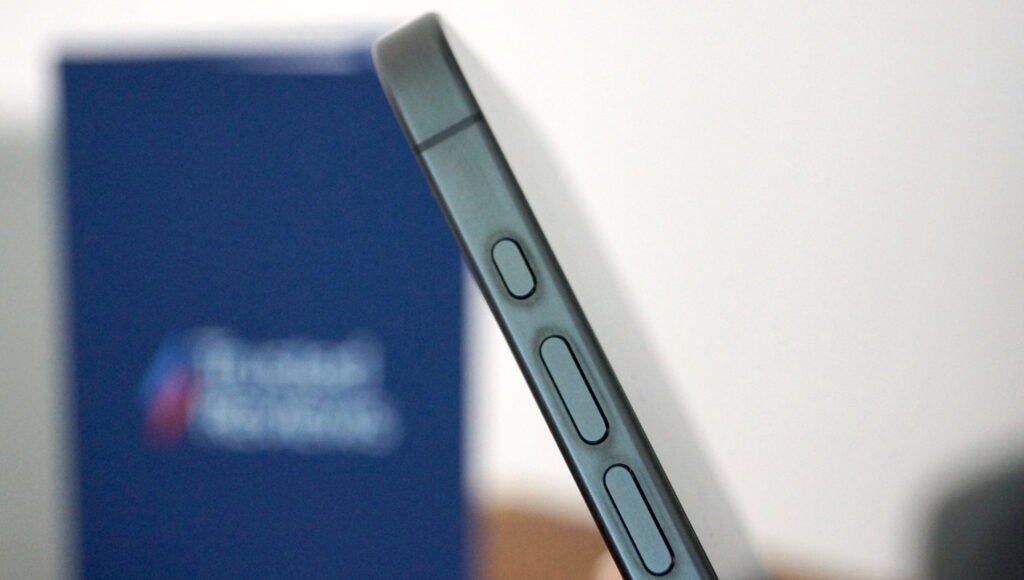
Elsewhere, the other notable addition to Apple’s iPhone 15 Pro lineup is the Action Button, replacing the silent switch that has been present on every single model of iPhone since its inception. The small button sits on the top-left of the phone, and while you can still use it to switch between silent and ring modes, it can do so much more.
Options include the ability to trigger features like the torch or camera with the press of a button, but I’ve found that the Shortcuts functionality is what allows the button to shine. It has allowed me to program the button to automatically control my Philips Hue lights, and more recently, I’ve programmed it to open my most-used chat app (Beeper) so I can quickly reply to messages no matter what I’m doing.
It was a feature I wasn’t so sure about when Apple first announced the iPhone 15 Pro, but after over a week’s use, I’m well and truly sold. I just wish I could program multiple shortcuts, rather than the single press-and-hold option available right now.
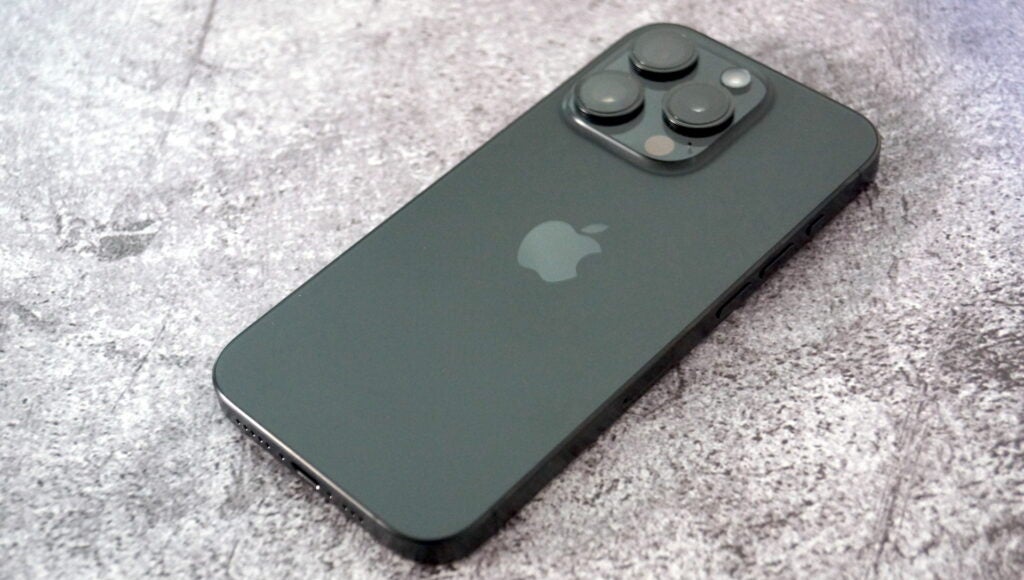
The biggest change for iPhone users, however, will no doubt be the introduction of USB-C. As someone who uses Android phones regularly, I see this as nothing but a benefit, offering better functionality and potentially faster charging speeds, but there will no doubt be plenty of long-time iPhone customers with a collection of now-redundant Lightning cables to dispose of.
Elsewhere, other notable returning features include IP68 dust and water resistance, Face ID recognition tech and Ceramic Shield glass protection that all help the iPhone 15 Pro look and feel the part.
Screen
- 6.1-inch ProMotion display
- Slightly slimmer bezels
- Top-end viewing experience
The screen is one area that remains essentially unchanged compared to the iPhone 14 Pro, sporting the same 6.1-inch ProMotion display and super-smooth 120Hz refresh rate that makes everything feel that little bit smoother and more responsive – so much so that I’m surprised Apple hasn’t made it a standard feature across the entire iPhone range.
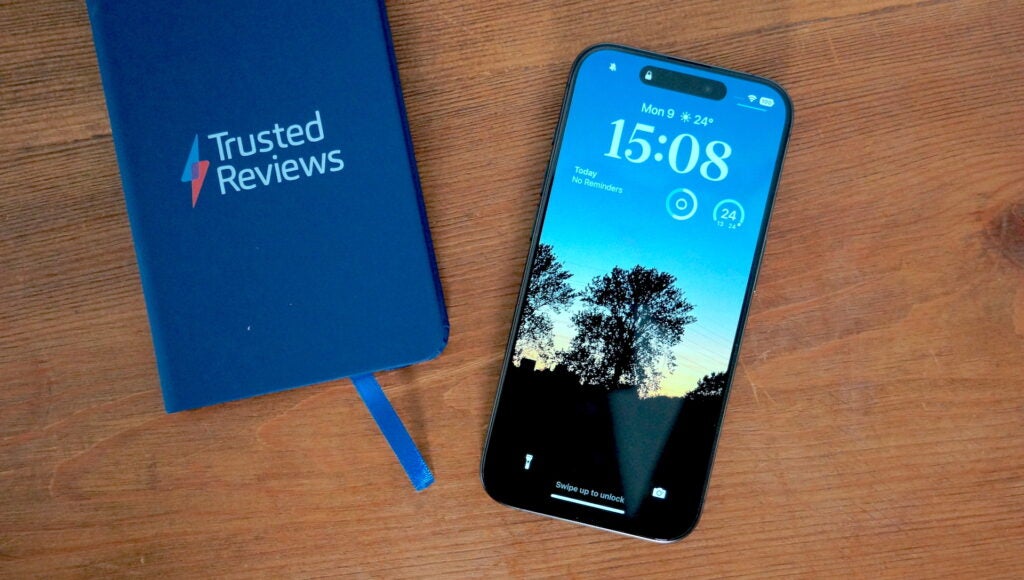
There is a slight difference when it comes to bezels, with the newer model further shrinking the black bars that surround the display, though I must admit that I didn’t notice any real difference going from the iPhone 14 Pro to the iPhone 15 Pro. Sure, there’s a little more space, but it’s not as instantly noticeable as the super-slim bezels of the Pro Max model.
That all said, I’m not exactly mad that the iPhone 15 Pro display hasn’t changed much as it remains one of the nicest displays on the market.
Aside from the LTPO tech that allows the display to run at as little as 1Hz, enabling that lovely interpretation of an always-on display with a full view of your lock screen, the display is crisp, vibrant and incredibly bright with a maximum brightness of 2000 nits when watching HDR content.
It’s not just the peak brightness that makes HDR content pop, however, it’s how well the phone handles bright and dark spots in the same scene.
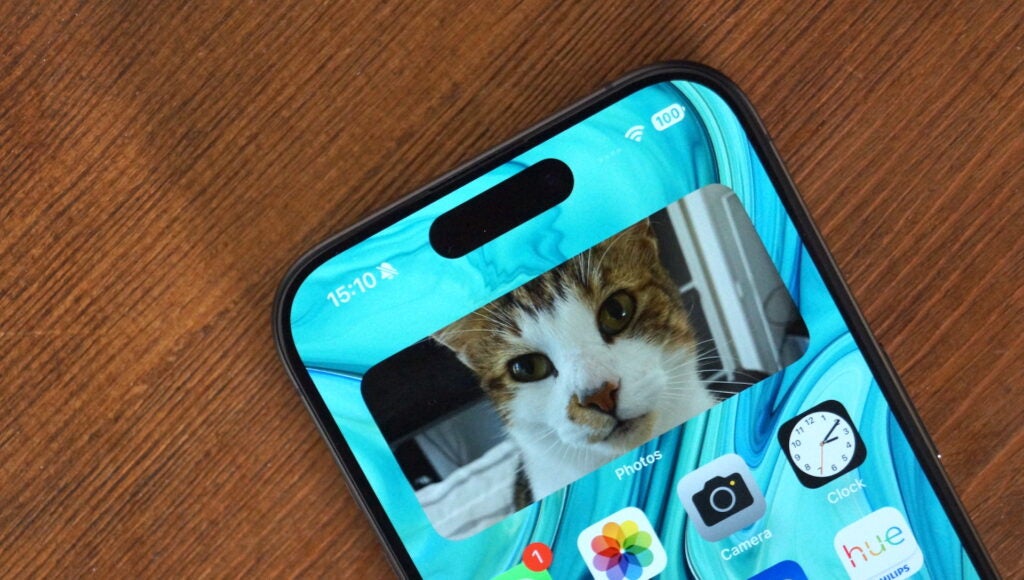
There’s much better dynamic range here than what you’ll see from most competing Android devices, even those that support the same Dolby Atmos and HDR10+ content on the iPhone, which makes the viewing experience a truly high-end one. That even extends to videos captured on the iPhone 15 Pro, with support for Dolby Atmos HDR video – but more on that in a bit.
You’ve also got the charming Dynamic Island tech that sits at the top of the display, essentially bringing the notch into the iOS experience with notifications and other widgets that seem to appear from the notch itself.
Cameras
- Capable main 48MP camera
- Same 3x telephoto as last year
- Incredible video performance
If there’s one area where I wish Apple would have done more, it’s the camera department. Sure, the iPhone 15 Pro remains one of the best camera phones around in 2023, but compared to the Pro Max with its snazzy new 5x telephoto lens, the iPhone 15 Pro feels a little too same-y.
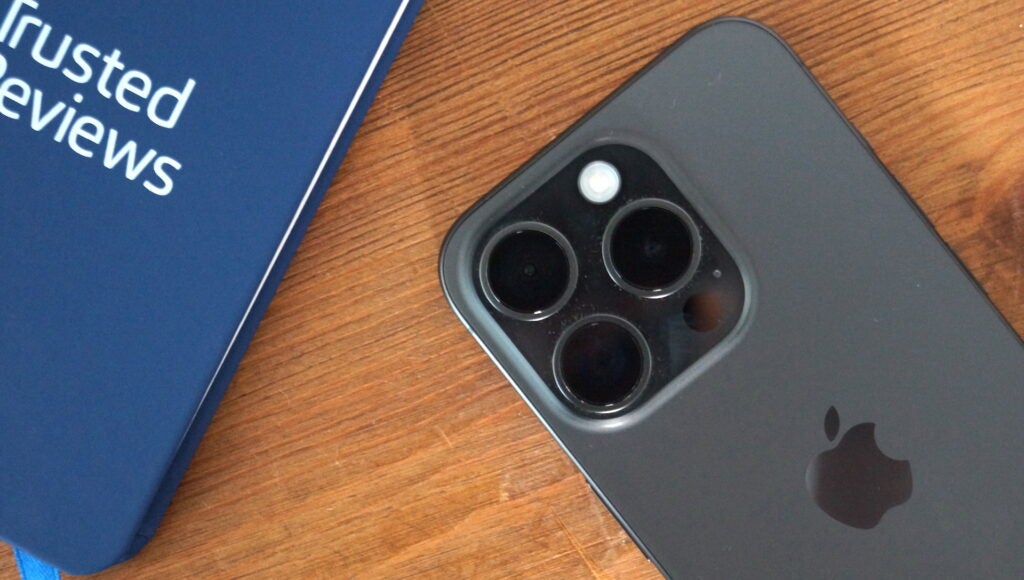
In terms of pure hardware, you’re looking at the same 48MP f/1.78 sensor with a 24mm-equivalent focal length, flanked by the same 12MP ultrawide and 12MP 3x telephoto lenses as its predecessor.
That said, the main 48MP snapper remains a great option for the iPhone 15 Pro. It’s more than capable of taking great shots in well-lit environments packed with detail and vibrant colours that make them ideal for sharing on social media. There’s even a natural bokeh on close-up images, bringing the comparison closer to DSLR-level than ever.
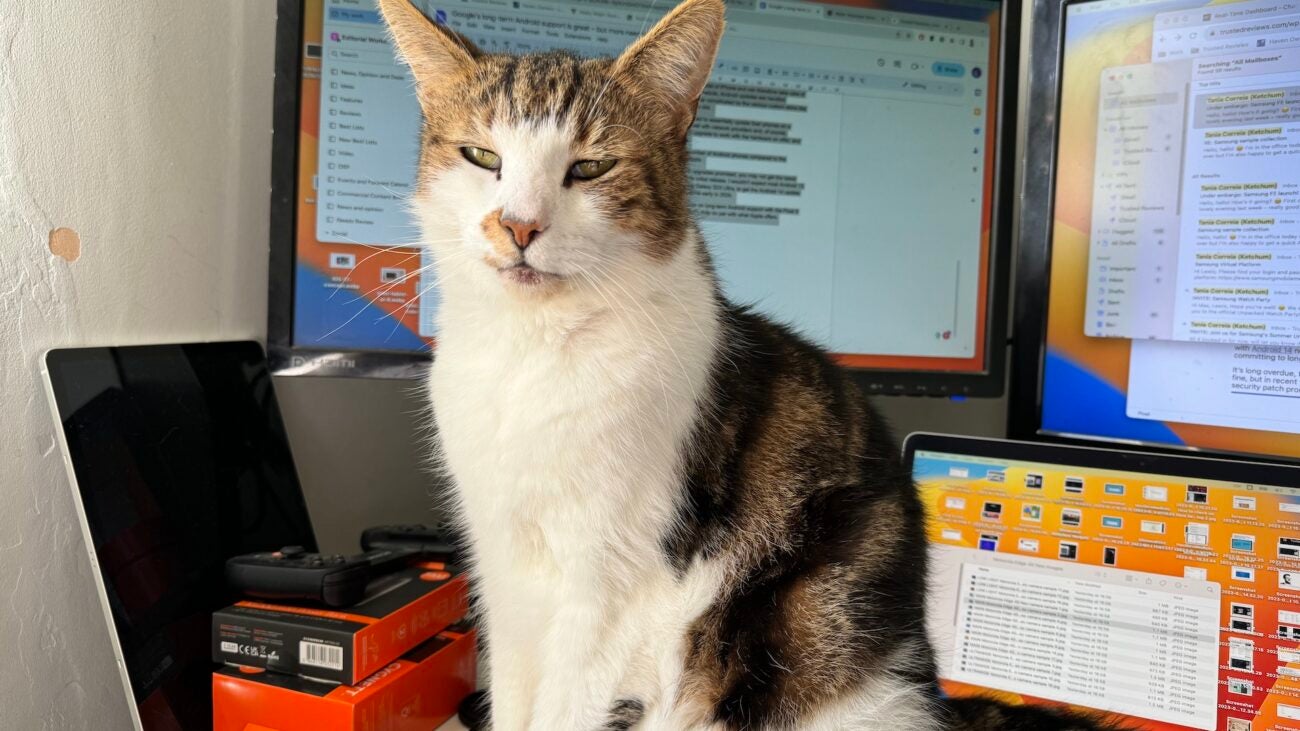





I’ve also been pretty impressed with the iPhone’s low-light capabilities, an area where Apple has excelled over the past few years. The iPhone 15 Pro, despite lacking the 1-inch sensor of some Android rivals, can slurp up plenty of light in a rather speedy fashion. Though you still get lens flaring from bright spots like streetlights, I think it’s one of the better options around for both colour accuracy and levels of detail.
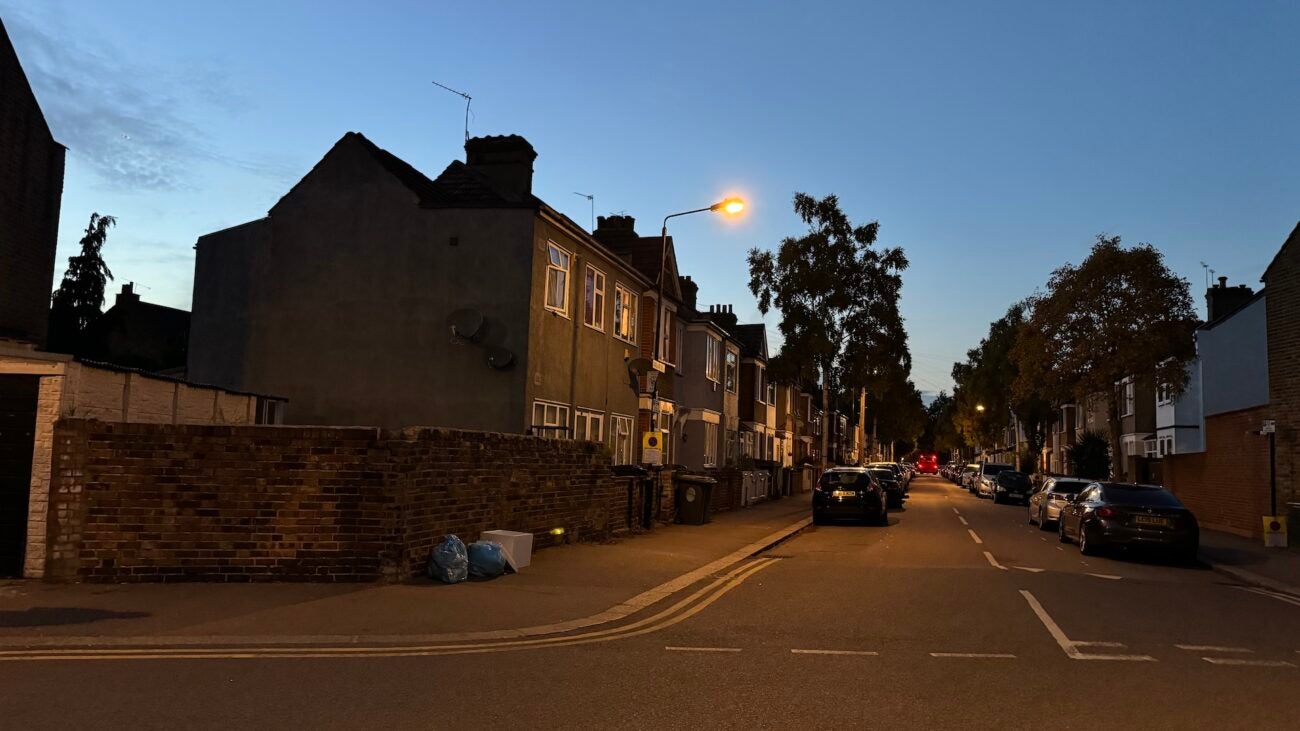


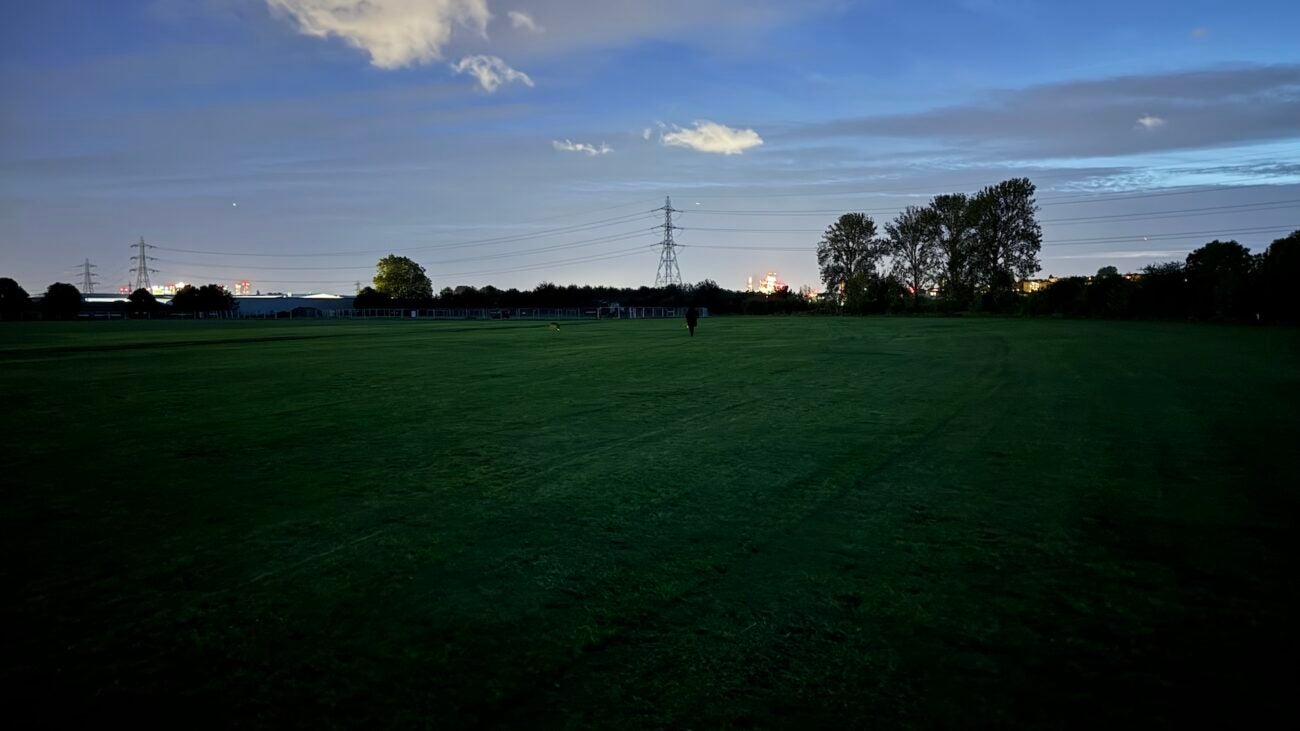

Telephoto performance is consistent with the iPhone 14 Pro, which is to say that the 77mm focal length is great for portrait photography – arguably more so than the upgraded 120mm focal length of the iPhone 15 Pro Max that gets you a little too close.
However, for everything outside of dedicated portrait photography, the 5x zoom of the Pro Max is the winner. It allows you to get closer to the subject without relying on digital zoom, and even when you do need to delve into the digital realm, the 25x zoom leaves the Pro model’s 15x in the dust.





It’s frustrating to see such parity between Apple’s top-end devices considering both are meant to be Pro models for pro-level users, and I hope it’s rectified with the iPhone 16 Pro.
Ultrawide performance is pretty consistent in well-lit environments, with the 120-degree wide angle ample enough to squeeze in those scenic vistas or big group selfies, with practically no edge distortion either. That said, it is still very much suited to daytime photography with an f/2.2 aperture that is not well suited to low-light photography at all.
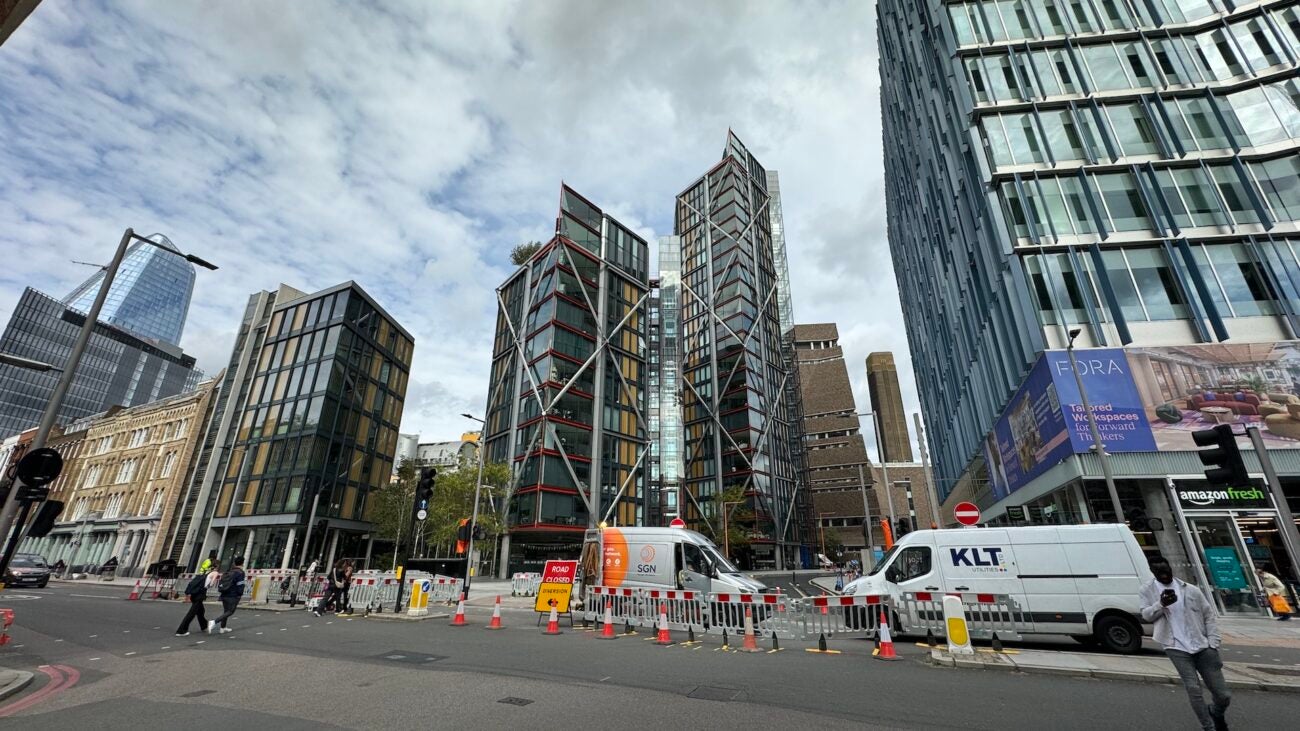

Flip the phone over and you’ll find the same 12MP selfie camera that Apple has used for the past couple of years, which is to say that it’s great for video calling and selfies but it can’t quite replace the high-end experience offered by the rear lenses.
Photography aside, videography is one of the main reasons to get an iPhone over practically any other phone around. The image stabilisation, even without the dedicated Action Mode, delivers sweeping pans and smooth movement rarely seen on Android. Combine that with 4K@60fps Dolby Atmos capture and the new Log encoding, and the iPhone 15 Pro is massive for pro-level content creators.
Performance
- A17 Pro chipset
- 3nm chipset is incredibly fast
- No apps or games to take advantage – for now
Performance is one of the areas that allows the iPhone 15 Pro to stand out not only compared to the regular iPhone 15, but most other phones on the market. That’s down to the use of Apple’s snazzy new 3nm A17 Pro chipset, ditching the Bionic moniker that was first introduced with the A11 Bionic of the iPhone X.
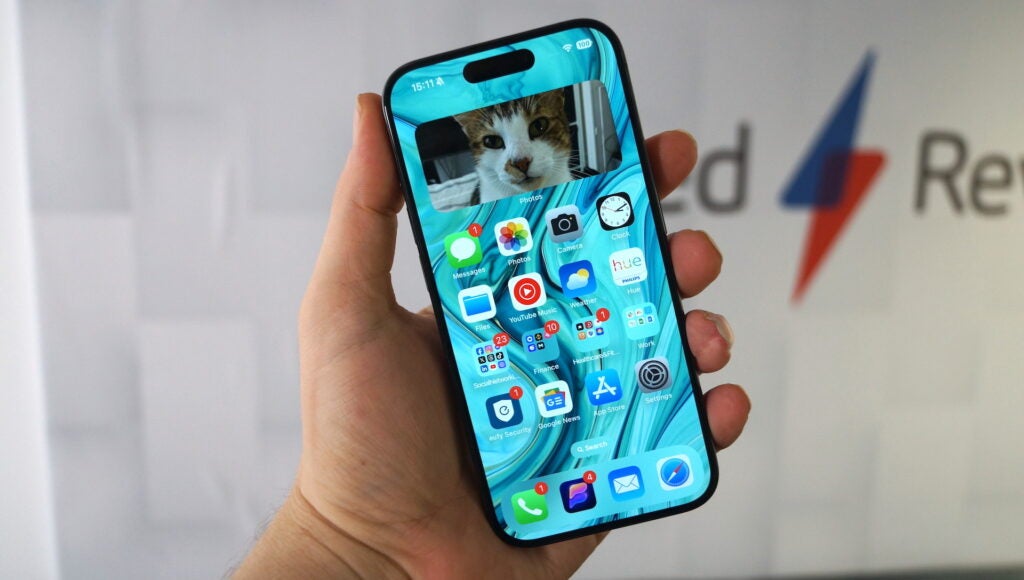
In benchmarks, I saw single-core CPU scores in Geekbench 6 of 2855 – more than the multi-core performance of mid-rangers like the Google Pixel 7a – while multi-core scores are around 2000 points higher than the top-performing Android smartphones we’ve benchmarked in the past 12 months.
It’s a similar story in the GPU department, though our benchmarking software (rather frustratingly) caps out at 60fps on iOS so it’s more difficult to showcase.
As you can see from the above, the iPhone 15 Pro leaves practically every other smartphone – aside from the iPhone 15 Pro Max, of course – in the dust, though the A16 Bionic isn’t too far behind.
This translates to a rapid, near-instant experience on iOS, with even smaller aspects of the experience like animation speed when closing an app feeling faster and more responsive than the iPhone 14 Pro I had been using up until very recently.
That also extends to social media use, high-end gaming with top-end graphics enabled and even photo and video editing with rapid export times ideal for content creators. Seriously, no matter what I’ve thrown at this phone, it has taken it in its stride.
The excessive power also means your iPhone will keep feeling fast for much longer than any other smartphone, making it a great investment for long-term use.
Software
- Runs iOS 17 out of the box
- Easy to use with handy Apple-focused features
- Great long-term software support
Software is arguably the biggest reason to go for an iPhone, with Apple’s iOS long-heralded as a much easier-to-use operating system than Google’s competing Android OS.
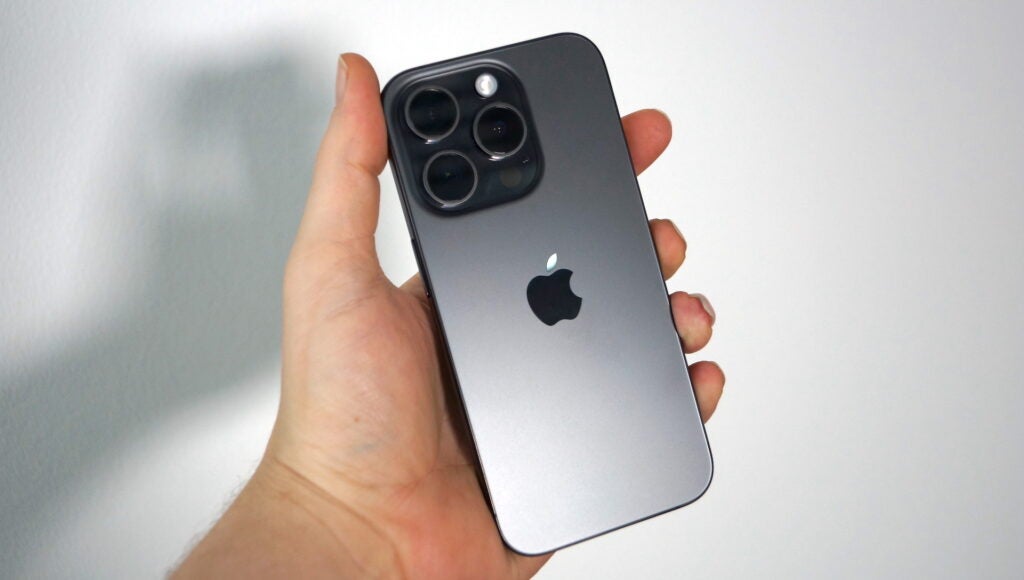
The design has been consistent over the years while new features improve the core experience on offer, be that Wi-Fi password sharing with nearby friends, iMessage and the chat benefits it brings or even the way that AirPods seamlessly connect to your iPhone once they’re out of the case.
As much as I hate to reiterate marketing claims, it does ‘just work’ most of the time, and iOS 17 further improves that with interactive widgets on the home and lock screen, an overhauled Phone app and even Standby mode that lets the iPhone double up as a smart display when not in active use.
There’s also the ecosystem play that Apple has made across its various product categories, which means your iPhone will play extremely well with a connected iPad, Apple Watch or Mac, with the latter providing quick access to your messages, calls, recently used apps and more, and AirDrop allows for quick content sharing among Apple devices.
The best part is that all these features are available on all iPhones running iOS 17, not just Apple’s new top-end model.
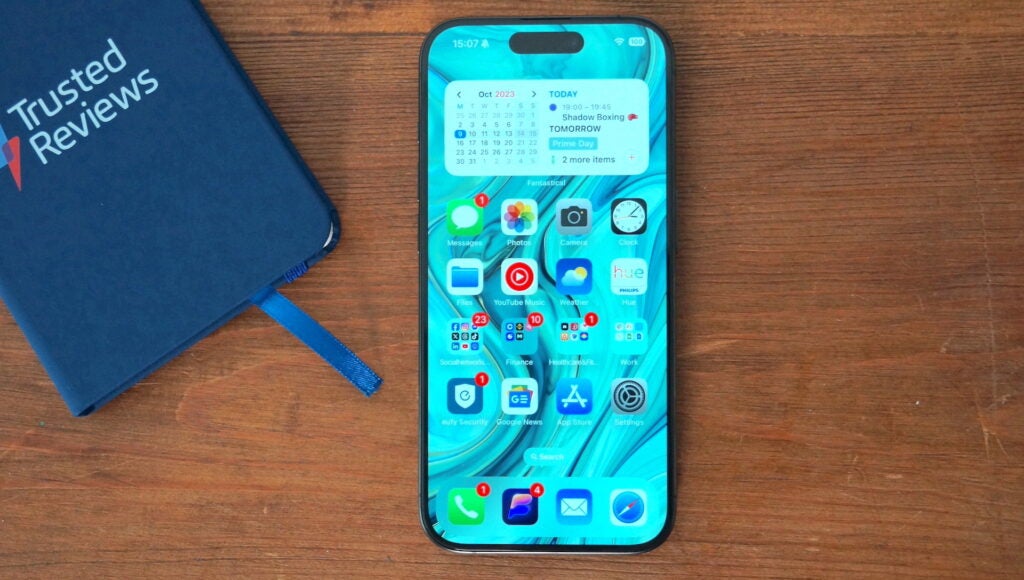
That’s largely thanks to an impressive long-term software promise that saw 2018’s iPhone XR get the update to iOS 17, and I’m expecting much the same with the iPhone 15 Pro. Apple doesn’t like to talk specifics, but I wouldn’t be surprised if the iPhone 15 Pro got the iOS 22 update, if not iOS 23.
By this point, you more than likely already know whether you prefer iOS or Android, and there’s nothing really that new to tempt Android users here, but for me, I love the experience of iOS on the iPhone.
Battery life
- Surprisingly solid all-day battery life
- USB-C, wired and wireless charging
- Not particularly fast at charging
With the new more battery-efficient A17 Pro and the dynamic 120Hz refresh rate, it’s safe to say that the iPhone 15 Pro will be an ‘all-day’ device for all but the biggest power users.
That has been my experience anyway, with a notable boost compared to my old daily driver, the iPhone 14 Pro. Though still not quite in the same league as some long-lasting Android smartphones, I found the iPhone 15 Pro could get me through a full day with around 5 hours of screen on time (and 7 hours of screen off time) with 26% left in the tank by the time I went to sleep.
That wasn’t a one-off either – during my week with the iPhone, I never felt the need to charge it at any point before I went to bed. That’s a big change from the iPhone 14 Pro that I’d sometimes have to top up after a busy day at work as it’d hit 20% by around 7pm.
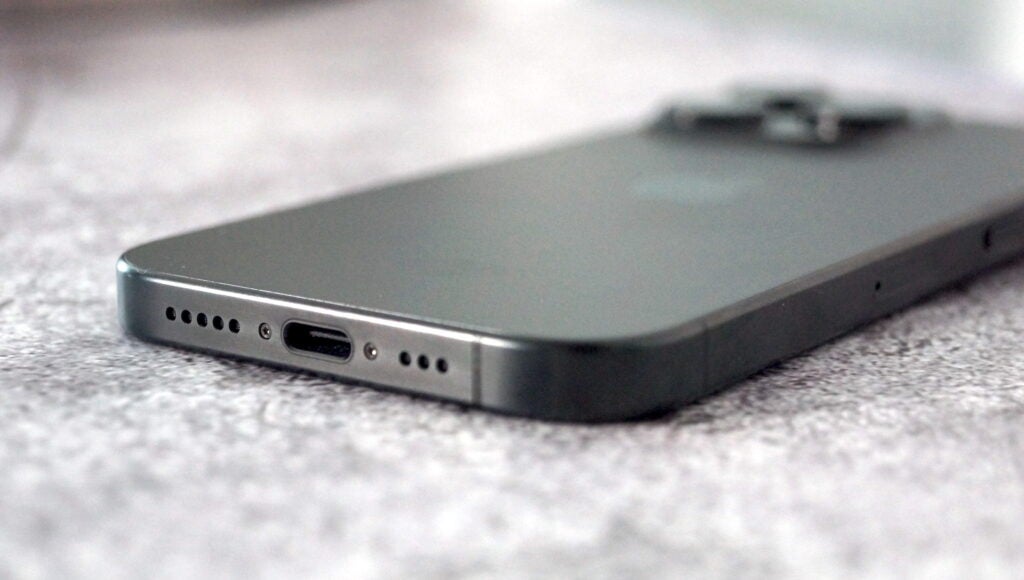
Of course, mileage may vary depending on what you’re doing, but for me, the iPhone 15 Pro has enough juice to keep you going all day without racing for a charger or power bank. That’s backed up by benchmarks too, with the iPhone 15 Pro sipping 7% with an hour of HDR Netflix playback, while a 30-minute gaming session saw 8%.
The only annoyance is that, despite the move to USB-C, the iPhone 15 Pro doesn’t charge any faster than its predecessor. That means you’re looking at a similar charge time to its older sibling, with the iPhone 15 Pro achieving a full charge in 92 minutes, while 30 minutes of charging saw 58%.
Latest deals
Should you buy it?
You want a compact pro-level iPhone
The iPhone 15 Pro is much easier to hold and use one-handed compared to the 6.7-inch iPhone 15 Pro Max, allowing for a no-compromise compact experience.
You want the best zoom camera possible
With the same 3x telephoto sensor as the iPhone 14 Pro, the iPhone 15 Pro falls behind the iPhone 15 Pro Max and its improved 5x telephoto camera tech.
Final Thoughts
The iPhone 15 Pro isn’t the most exciting upgrade ever, especially when practically every other iPhone in the iPhone 15 collection has had a fairly significant upgrade.
The iPhone 15 and 15 Plus now have Dynamic Island and a new main 48MP camera, while the iPhone 15 Pro Max has a new stabilised 5x telephoto lens. The iPhone 15 Pro, however, lacks any unique new hardware, instead employing the same updated design, new materials and USB-C as the Pro Max.
That said, the iPhone 15 Pro is very much a great 2023 smartphone with a gorgeous design that’s comfortable in the hand, a stunning display and an extremely capable camera setup. The A17 Pro in particular is a highlight, boasting the best performance of any smartphone alongside the Pro Max, and the knock-on effect on battery life is certainly appreciated. It just doesn’t represent much of a reason for iPhone 14 Pro users to upgrade, is all.
How we test
We test every mobile phone we review thoroughly. We use industry-standard tests to compare features properly and we use the phone as our main device over the review period. We’ll always tell you what we find and we never, ever, accept money to review a product.
Find out more about how we test in our ethics policy.
Used as a main phone for a week and a half
Thorough camera testing in a variety of conditions
Tested and benchmarked using respected industry tests and real-world data
FAQs
No, the iPhone 15 Pro has a USB-C port, but Apple sells a Lightning-to-USB-C adapter for any older accessories.
No, there isn’t a charging brick, but there is a nice braided USB-C to USB-C cable.

